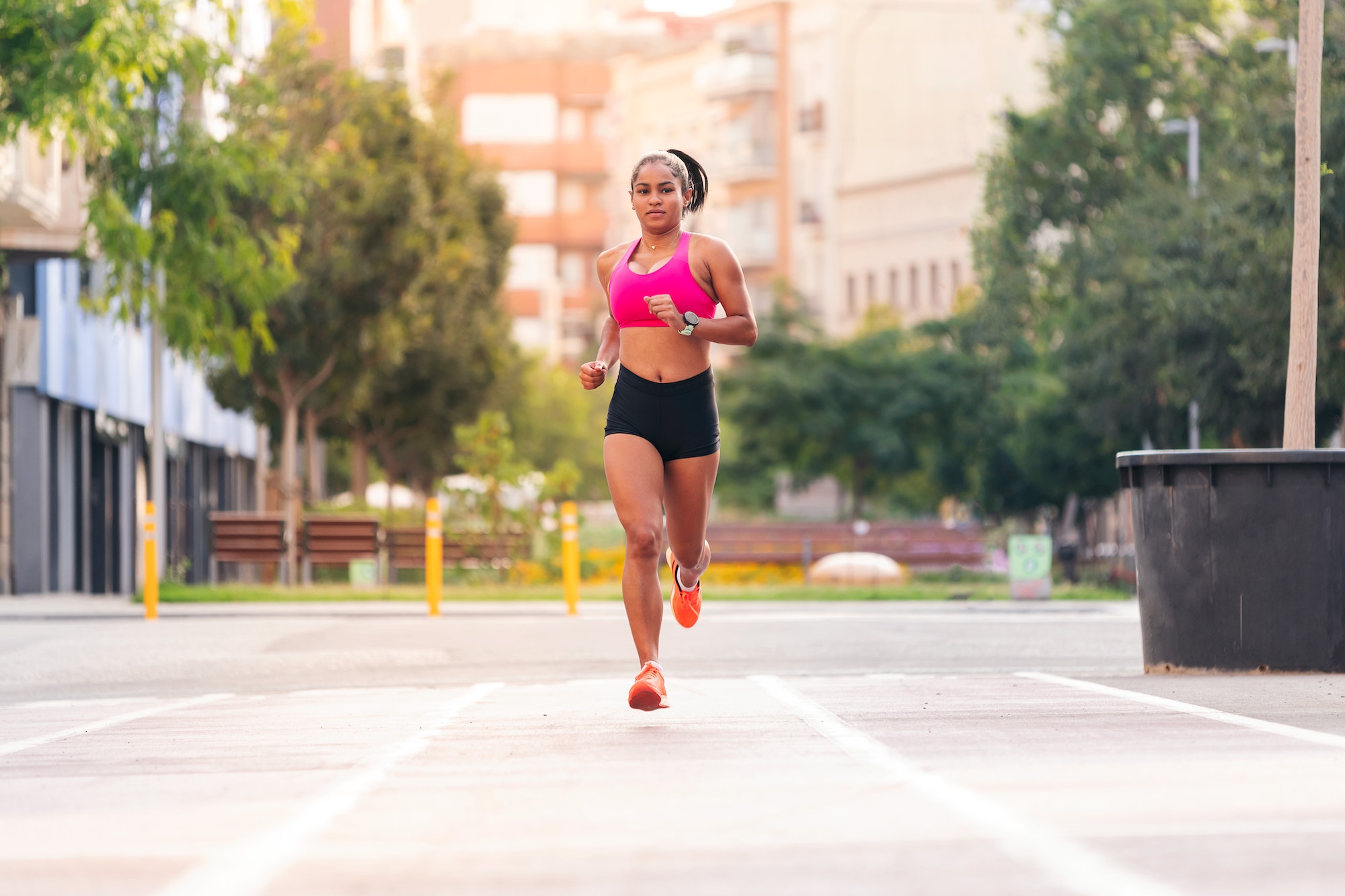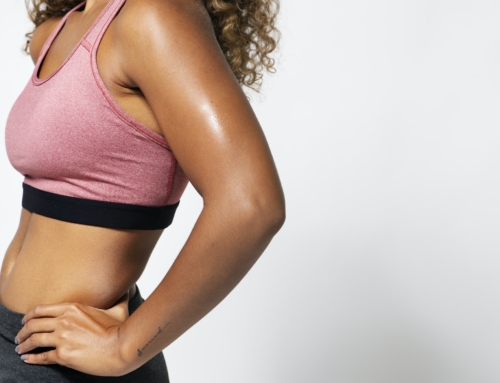Introduction
A sports bras for running are designed to support the breasts during physical activity. Women of all ages and sizes can wear them, but they’re essential for those who are active in sports or exercise.
A good running bra should be comfortable enough to wear while you run but also provide enough support that you don’t need to worry about bouncing around too much. The straps must stay put on your shoulders without slipping off or digging into your skin too much–and if they do slip off, there should be some sort of adjustment system available so that you can fix them quickly before getting back into action!
Types of Sports Bras
Four main types of sports bras exist compression, encapsulation, combination, and racerback.
- Compression bras are the most common type of sports bra. They offer support by using tight elastic bands to compress your breasts against your chest wall. This can reduce bounce by up to 90%.
- Encapsulation bras use cups made from soft fabric that provide individualized support for each breast separately. This helps prevent movement between the breasts when running or jumping because it keeps them separated from each other instead of squished together like in a compression bra–which means less bounce!
- Combination bras have both encapsulation cups, and an additional layer of fabric overtop those cups, providing extra lift and separation from other layers underneath (like a tank top). If you’re looking for an extra charge without sacrificing comfort, this might be just what you need!
Racerback styles feature straps that go around only one shoulder instead of two like traditional racerback tanks do; however, many runners prefer this style because it allows them better range-of-motion while still providing enough support throughout their workouts.”
Benefits of Wearing a Sports Bra While Running
- Support – A good sports bra supports your breasts, reducing breast pain and injury.
- Comfort – Wearing a well-fitting, supportive sports bra helps you feel more comfortable during exercise because it reduces the bouncing and jiggling of your breasts. At the same time, you run or do other physical activities.
- Reduction in breast pain and injury. Studies have shown that wearing a well-fitted sports bra reduces the risk of developing breast pain (such as soreness and tenderness), particularly if you exercise regularly or participate in high-impact exercises like running or jumping rope.
Choosing the Right Sports Bra
When choosing a sports bra, there are several factors to consider. These include size, shape, material, and style.
The first thing to do is measure yourself correctly. This will help ensure you get the right fit when purchasing your new bra. It’s essential not only for comfort but also for safety reasons. If the cups aren’t large enough or too small (or even if they’re not shaped correctly), it could cause injury by rubbing against sensitive areas like breast tissue or nipples during exercise.
The next step is choosing between an underwire or no underwire bra based on personal preference; both have pros and cons, so choose wisely! Underwire bras offer more support than non-underwire options. Still, they tend to be less breathable because their materials are thicker than those found on other styles like compression tops, which provide similar support levels without sacrificing airflow through mesh panels throughout each garment’s design.
How to Measure for a Sports Bra
To measure for a sports bra, follow these simple steps:
- To find your chest circumference, wrap the tape measure around your chest at its fullest point.
- Next, calculate band size by measuring around the ribcage directly underneath the bust line and adding 5 inches (for example, if you have a 28-inch ribcage measurement, add 5 inches to get 33). This will give you an idea of the size band most comfortable for you.
How to Care for a Sports Bra
If you’re a runner, you know that the right sports bra can make all the difference in how comfortable and supported you feel during your workout. But after months or years of wear and tear, even the best-made bras may need some TLC to keep them in tip-top shape. Follow these tips for washing and drying your favorite running gear so that it lasts as long as possible:
- Hand washes only! Many people think they can throw their bras in the washing machine with everything else–but this will ruin them faster than anything else. Suppose you have delicate fabrics like lace or mesh material on top of an underwired frame (like many sports bras). In that case, hand washing is essential because these things will likely get caught up in other clothes during spin cycles and become damaged beyond repair.
- Avoid bleach! Bleaching agents are harsh chemicals that will break down elasticity over time.
- Use warm water instead of hot water when possible; hot water tends to fade colors faster and cause shrinkage due to increased tension between fibers.
- Don’t wring out excess moisture from the fabric before drying–this can cause stretch marks along seams where too much stress has been placed upon them.
Questions about Sports Bra for Running
- What is a sports bra, and why is it necessary for running?
-
- A sports bra is a specialized undergarment designed to support and reduce breast movement during physical activity. It is necessary for running to prevent discomfort, pain, and potential long-term damage to breast tissue.
- How do I choose the right size sports bra for running?
-
- To choose the right sports bra for running, measure your chest and underbust using a tape measure and refer to the size chart provided by the brand. It is essential to try on different sizes and styles to find the most comfortable and supportive fit.
- What is the difference between compression and encapsulation sports bras for running?
-
- Compression sports bras compress the breasts against the chest wall to reduce movement, while encapsulation sports bras use individual cups to support each breast separately. Encapsulation sports bras are generally more supportive for larger cup sizes.
- Can I wear a regular bra for running instead of a sports bra?
-
- Regular bras do not provide the necessary support and may cause discomfort and pain during running. It is recommended to wear a sports bra specifically designed for physical activity.
- How often should I replace my sports bras for running?
-
- It is recommended to replace sports bras for running every 6-12 months or after 75-100 years, whichever comes first. Over time, the elasticity and support of the bra may decrease and affect its performance.
- Can I machine wash my sports bras for running?
-
- It is recommended to check the care instructions the brand provides, but most sports bras for running can be machine washed in cold water and hung to dry. Avoid using fabric softeners and bleach.
- Do I need to wear a shirt over my sports bra for running?
-
- It is a personal preference, but wearing a shirt over a sports bra for running can provide additional support and coverage, especially for larger cup sizes.
- Can I wear a sports bra for running with a small bust?
-
- A running sports bra can support and reduce movement for all breast sizes, including tiny busts.
- What are some standard features of a sports bra for running?
-
- Some standard features in a sports bra for running include moisture-wicking fabric, adjustable straps, breathable mesh panels, and a supportive under the band.
- Can I wear a sports bra for running or other physical activities?
-
- Yes, a sports bra for running can be worn for other physical activities such as aerobics, dancing, and hiking. However, choosing the right type of sports bra for the level of impact and movement involved in each activity is essential.





